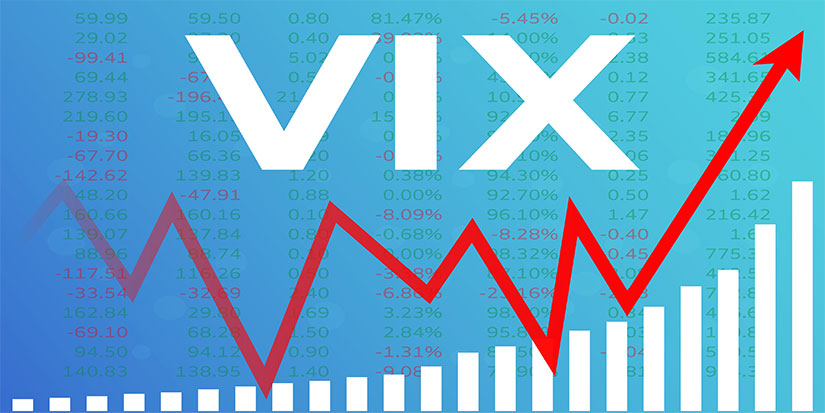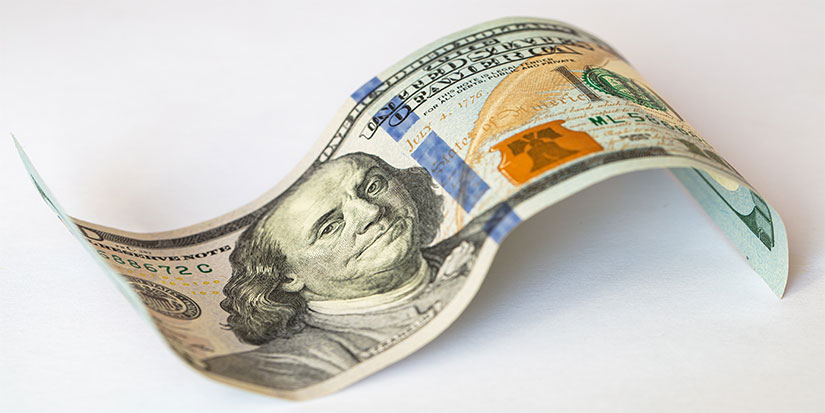
Why the Market Blew Up
I think we have heard enough about the yen carry trade, although that was certainly a contributing factor. Fine, we will rehash it here…
Since Japan has essentially zero interest rates, you can borrow yen in Japan, pay 0% interest, convert it into Mexican pesos, and stick it in a Mexican bank where it will earn 8% interest. You earn the carry, and if enough people pile into the trade, you will make money on the exchange rate too.
I call this “picking up nickels in front of a steamroller.”
In finance, there are two possible payoff profiles:
-
Make a little, lose a lot.
-
Or make a lot and lose a little.
This has been the subject of debate for decades. Really, this is all about optionality. If you sell options, you will make a little but stand to lose a lot. If you buy options, you may lose a little, but you stand to make a lot. Most people prefer to sell options rather than buy them—they need the instant gratification of watching an option expire worthless. And the carry traders have done well over the years. Even with the most recent unwind, if you go back over a period of years, they are still up a lot of money. It’s just the people who were late to the party who are sad.
But there were other factors. The short volatility trade (which is adjacent to the yen carry trade) was becoming very popular again. You were looking at extreme levels of market concentration, rank speculation in Nvidia, geopolitical tensions, a weak payroll report, and Oh, Kamala Harris’s ascendancy in the polls. Don’t yell at me—she is less market-friendly than Trump, an agreed-upon fact. It all came together in a poo hurricane, and the VIX got up to 65, though that was pre-market, and you couldn’t sell it there. By the time the market opened, VIX futures were in the high 30s, and things were already on the way to normalizing.
But the big question is: Can this happen again? Will we get a Round II?
Maybe…
I don’t have much more to say than that. Maybe it will; maybe it won’t. Most people seem to think it won’t, although that could be recency bias. Things are better now, so people think they will be better in the future. But volatility events cluster. The genie is out of the bottle.
I will point out that the economic data has been getting worse for a while. The last piece of truly hot economic data came in the June payroll report, which came in above expectations, but there was a lot of disagreement about the household survey. The last two have been unambiguously weak.
So, if you follow the data, things are getting weaker for the economy, and there is open discussion of a recession. The yield curve is now practically uninverted. A lot of people are focused on the September FOMC meeting, whether we will get a cut and how much the cut will be (the markets will be disappointed with 25 basis points). If we are truly going into a recession, there are practically no scenarios where stocks don’t go lower.
Many people are not nervous here. I am nervous.
There are other signs. Warren Buffett sold half of his Apple position and now has $270 billion in T-bills. If Warren Buffett can’t find anything he wants to buy, then maybe we shouldn’t either. This last episode cut back on some speculation and punished some late longs and restored some technical health to the market.
I don’t know if the storm has passed. I’m acting as if it has not.
What to Do
The question for a lot of readers of this newsletter is: What to do?
If you are a Regular Joe with a regular 401(k) that you make periodic contributions to, do you want to stop making contributions? Do you want to sell and move the money into stable value or a money market fund?
Most people would say that the answer to that question is “no.” You can’t time the market, and you shouldn’t try. And I half-agree with that. The counterargument is that if you have substantially all your assets in stocks, then you are incredibly undiversified, and it might be a good idea to cut back on some risk or at least spread it out into other asset classes.
You would be sad if your million-dollar retirement account turned into a half-million-dollar retirement account, especially in your 60s. And I bring all this up because I frequently find that people have way, way too much risk. Hence The Awesome Portfolio, which you can now get paired with my Strategic Portfolio (an actively managed Awesome Portfolio for all intents and purposes). Give it a look here.
Only you can decide what the right amount of risk is. I tend to find that people are overconfident, for what it’s worth.
Btw: It’s Time to Move on the Big Short 2.0
For those who follow my premium newsletter Street Freak, you’ve likely heard me talk about the massive bubble unfolding in the private equity market. Well, the bubble is primed to pop, and like Christian Bale's character in The Big Short, we’re gearing up to put a new trade on in a limited-risk fashion.
This isn’t for the faint of heart, though. It won’t be an easy trade, and it will take some time to play out. But we’re limiting risk, so there’s not a lot of downside.
I’ve created a comprehensive whitepaper called Operation Watchtower—it’s free, by the way; gratis; on the house—that details the sh**storm of the $8 trillion meltdown that’s unfolding in the private equity sector.
I really think this downturn could give us the trade of the decade. The signs are that glaring. So, if you want to learn more about the next Big Short, hop on the waitlist here, and I’ll send you the details the moment they’re available.
Also, if you want a primer, be sure to check out the latest special-edition episode of the BE SMART podcast, where I cover the problems surrounding private equity and the actionable, step-by-step moves needed to trade something of this magnitude.
It costs you nothing but time, so check it out. It’s worth it.

Jared Dillian, MFA
|

Financial Nihilism
Attaining wealth is harder these days, but in some ways, it is easier. I would not worry too much about it. Think about the future, or the future will think about you.

The No Worries Way
I am in New York for the launch of No Worries. Let’s talk about all the personal finance decisions I made to get here.
The House, the Car, and How Much to Save for Retirement
I follow a personal finance guy on Twitter, and I actually did an interview with him years ago. He’s a terrific guy, and he came up with some basic financial rules.

Layoffs Are Traumatic but Not the End of the World
Let’s say you just got laid off from your job. You’re probably pretty upset.

When to Take Social Security Benefits
Claiming Social Security benefits at age 62 is a huge mistake. Do not take Social Security at age 62.